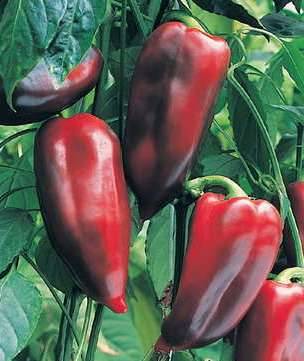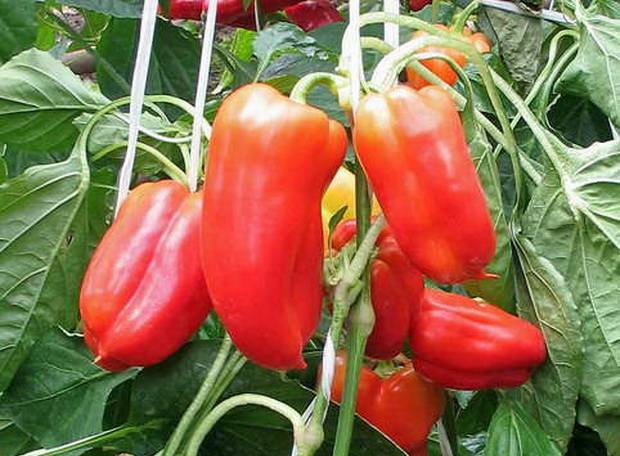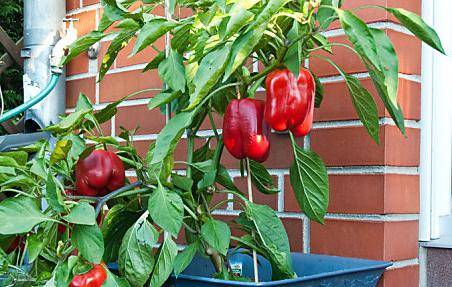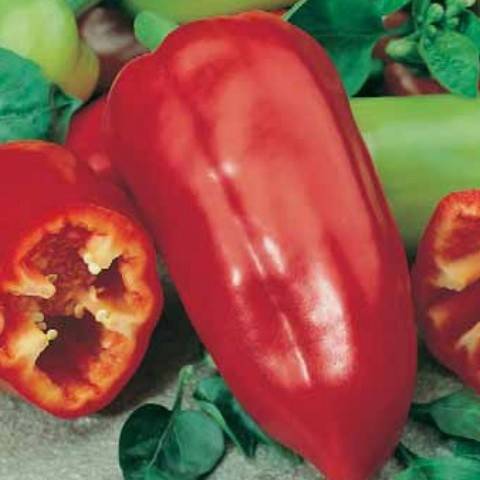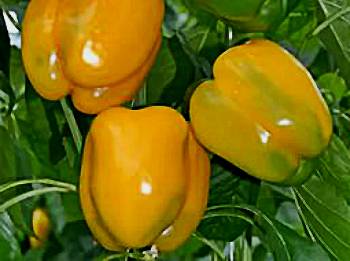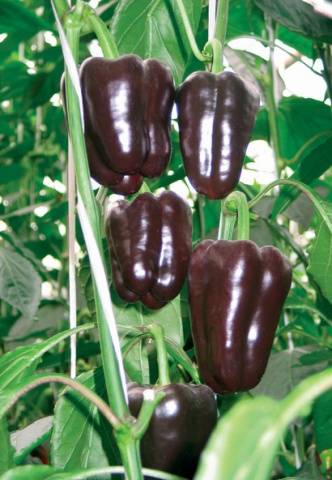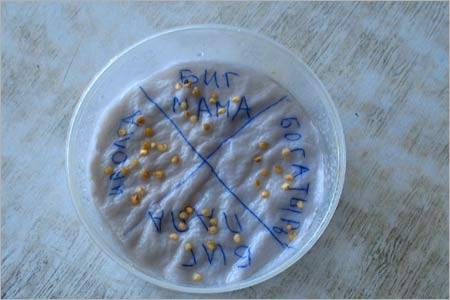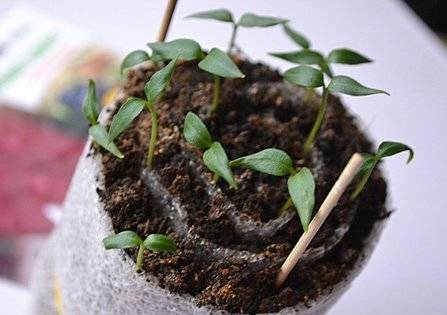Content
Experienced gardeners of the Moscow region argue that it is possible to grow a good harvest of pepper in any year, even not very successful, in terms of high temperatures. But it is necessary to select varieties created specifically for the latitude of the Moscow region.
Many summer residents, looking for themselves the best varieties of pepper for the Moscow region, they make the mistake of choosing fruitful, but bred for southern latitudes. Peppers, zoned for Crimea or Moldova, will not give a full-fledged harvest in the Moscow region. Although their yield in their "native lands" is very high.
It is better to choose varieties that are not so fruitful, but they are guaranteed to yield a harvest. Today, the selection of "northern" sweet peppers is very large. Only the State Register contains 400 varieties of pepper, zoned for northern latitudes. Such a large selection is even more confusing, and stores offer additional "southern" varieties and varieties of foreign producers.
Experienced gardeners, of course, try and new varieties of pepper, but for a guarantee they planted already well-proven ones.
The best varieties of sweet peppers for the Moscow region
Pinocchio F1
A very early hybrid. The period before harvest is 90 days. Hanging fruits. Pepper up to 17 cm long with a diameter of 6 cm at the base of the cone. Wall thickness 5 mm. Ripe fruit is dark red in color. Peppers are well stored and transported. Designed for conservation.
Shrub up to a meter high, spreading, with limited branching, semi-determinate. Recommended for indoor and outdoor use.
Czardas
An early ripe pepper variety that yields a harvest after 95 days. Fruits and leaves on the bush are arranged in bunches. One bush gives 13-17 peppers with a total yield of up to 10 kg / m². The fruits are conical. The length varies from 13 to 16 centimeters with a base diameter of 6 to 8 centimeters. Wall thickness 6 mm.
Ripe peppers are orange-red. In an immature state, yellow-orange. Suitable for food at any stage.
The height of the bush is up to 70 cm. The variety is determinant. The bushes are dense, so you can plant up to 10 bushes per m².
Winnie the Pooh
A very famous and popular variety of pepper in the Middle lane. Pepper was bred in 1981 and still has not lost its relevance. An early maturing variety that yields on the 105th day.
Shrub up to 30 cm high, standard. There is little foliage, the fruits are collected in bunches. The variety is fruitful, although the fruits are medium-sized. One pepper weighs from 45 to 70 g with a wall thickness of 5 mm. At the same time, the yield per m² reaches 2 kg. The maximum yield is obtained when the plantings are thickened up to 20-25 bushes per m². The entire crop can be harvested in 2-3 harvests.
This pepper is often chosen by farms for the purpose of commercial cultivation. The pulp of the fruit is dense, due to which the pepper has a good keeping quality even at the stage of full ripening.
Health
Pepper has a high yield (up to 4.5 kg / m²) and good fruit set in low light conditions. The latter is one of the unique properties of this pepper variety.
A very early ripening variety. The growing season is 80 days. The bush is tall, can reach 1.7 m in height. Ripe fruits are red. If harvest storage is required, the peppers are harvested at the green stage.
Small pepper. Fruit length up to 12 cm with a base diameter of 6 cm. Wall thickness 4 mm. Weight up to 41 grams.
Orange miracle
An early maturing variety with a growing season of 100 days. The bushes are tall, reaching 1 m. The bush has a very decorative appearance during the fruiting period. Orange peppers look very beautiful against the background of green foliage.
Fruits are cuboid, weighing up to 250 g and measuring 10x9 cm. The flesh of the peppers is very tender, with high taste, 6 mm thick. Designed for fresh consumption, cooking, preservation.
The yield of the variety is up to 14 kg / m². On one bush, an average of 10 peppers are tied. Can grow in open beds and greenhouses. Resistant to major viral diseases.
Cornet
An early ripe variety that allows harvesting on the 110th day. Fruits fully ripen on the 140th day. Peppers of this variety have an original dark brown color. Color is not the only virtue of this variety. Pepper also has a high content of carotene and ascorbic acid.
Hanging prismatic fruits. Pepper weight up to 220 g, size 8x7 cm. Wall thickness 6 mm. Ripe fruits are brown, technical ripeness is dark green.
Peppers are best planted indoors. In shelters, it is more convenient to care for tall bushes of this variety and protect them from the wind. In an unheated greenhouse, the bush grows up to 160 cm, and in a winter greenhouse up to 2 m. The bush is semi-determinate, with a small number of leaves.
In addition to those described, in the Moscow region grow well Zaznayka, Bagration, Litsedei, Barguzin, Patron... Which of the varieties to choose depends on the capabilities and preferences of the gardener. Someone loves experiments and will plant new varieties like Cornet or Chardash. Someone will prefer the good old Winnie the Pooh or Health.
Little secret! Collecting peppers at the stage of technical ripeness allows you to double the yield.
Summer residents about the best varieties of sweet pepper for the Moscow region, reviews
Growing seedlings
In the Moscow region, obtaining any varieties of pepper is possible only by preliminary cultivation of seedlings. If you plan to plant seedlings directly into the ground by transshipment from a planting pot, the seeds are sown 50 days before planting. If there are picks in the plans, sowing is done in 60 days.
Sowing preparation
First, you need to select high-quality seeds so as not to waste resources in the form of soil and containers. The seeds are dipped in slightly salted water. A seed with a full-fledged poured kernel will drown, an empty one will float. We catch the empty ones and throw them away, collect high-quality ones, wash and dry them.
You can speed up the germination of seeds by placing them in a moist, warm environment. Previously, pepper seeds are soaked for 5-6 hours. Some people prefer to soak the seeds in a stimulant for 3-4 days, as pepper seeds take a long time to germinate.
The most common methods of germination are in a bag and on a saucer.
In a bag
The seeds are soaked directly in a canvas bag. After soaking, the bag is taken out and put away in a warm place with a temperature of about + 27 ° C. After a few days, the seeds will sprout. Some disadvantage of this method is that if you have several varieties of pepper, you will have to make several bags and somehow mark them, since all varieties of pepper are planted for seedlings at the same time.
On a saucer
Any flat-bottomed container can play the role of a saucer. Put a napkin at the bottom, moisten it with water and spread the seeds. Cover the top with another damp cloth. If the container is closed with a lid, it means that you do not have to maintain the humidity of the napkin.
If there are several varieties of pepper, a dry napkin can be divided into sectors with a ballpoint pen, signing the variety in each sector. Thus, instead of laboriously making several pouches, you can only spend five minutes marking the napkin. The main thing then is to correctly decompose the varieties into their branches.
In the lips
If there is no suitable container, you don't want to make bags either, you can use ordinary foam sponges for washing dishes. Of course, the sponges must be clean.
Previously, the sponges are disinfected in a solution of potassium permanganate, after which they are thoroughly squeezed out. Each variety will require two sponges.
The seeds are placed between the sponges, the edges are fixed with elastic bands and the sponges are placed in a plastic bag, making sure that an air bubble remains in the bag.
No one has yet managed to manually squeeze a piece of foam rubber dry, so you don't have to worry about the presence of water, you just have to periodically turn the sponges over. The water in the foam flows down.
Toilet paper snail
Seeds are laid out on a strip of toilet paper at a distance of at least 5 mm, covered with a second layer of paper on top. The paper is slightly moistened and a layer of soil for seedlings is poured on top. The tape is neatly rolled into a spiral together with the soil and placed in a plastic bag. The bag must be tied so that the water does not evaporate.
After the sprouts appear, the package is opened and placed on the windowsill. The downside is that if there are several varieties, it is easy to confuse seedlings, even trying to mark the varieties with sticks. Plus, sooner or later, these seedlings will dive. Very unpopular procedure.
Sowing
The seeds that have become baked are planted in pots or seedling boxes. Pots are preferable, but they take up a lot of space. The advantages of the box and the pots are combined with special cassettes for seedlings.
Before germination, the room temperature must be maintained at + 27 ° C. After that, you can reduce it to +25.
The emerging sprouts need lighting for 12 hours. Since the day is still short in February, phytolamps must be used. Water the seedlings with water at room temperature. After the appearance of the first true leaf, you need to carry out the first fertilizing with fertilizers.
Before planting in a permanent place, pepper seedlings are hardened for a week, taking them out into the open air and gradually increasing the residence time there.
High-quality seedlings before planting should have a height of 25 cm and from 7 to 12 leaves. In the Moscow region, pepper planting is usually carried out at the end of May, but it is better to navigate according to the specific conditions of the current year. The main thing: frosts should end, and the soil should warm up to + 18 ° С.
